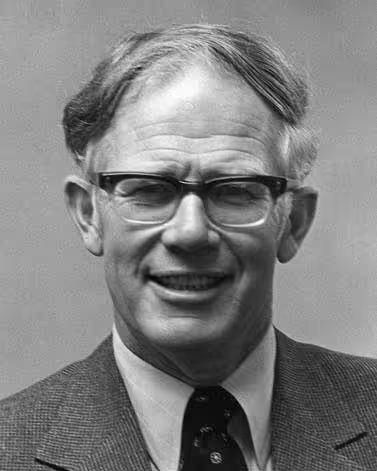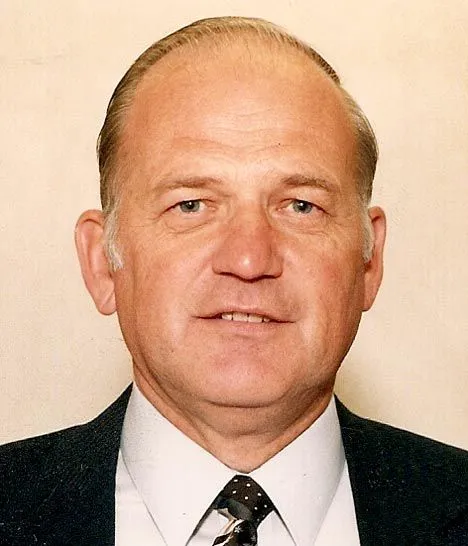The Honoring the Best in PIL Sports Since 1981
The Hall of Fame was established four decades ago, then resurrected in 2000 after a seven-year hiatus. Now, it's here to stay.

By Paul Danzer
For nearly 40 years, the Portland Interscholastic League Hall of Fame has honored the area’s best student athletes and served as testament to the devotion of educators and athletes who treasure the positive impact high school sports have on young people.
While the first PIL Hall of Fame class was inducted in 1981, most of the details about the hall of fame’s founding are lost to history. Its origins, however, can be traced to one man, according to Bill Wiitala (Roosevelt, 1954; PIL Hall of Fame, 1992).
That man, Wiitala says, was Ron Pheister.

“He was the instigator,” says Wiitala, who from 1966 through 1988 was the Madison High athletic director and from 1988 through 1992 served as the assistant AD for Portland Public Schools. “He was the one who really pushed to make it happen.”
Pheister was a 1951 graduate of Grant High who played football at Oregon and served as the director of athletics for Portland Public Schools from 1979 through 1988. In 1989, Pheister was inducted into the hall of fame he helped establish. He died in 2018 at the age of 85.
Wiitala believes Pheister and the PPS athletics office staff nominated the first few classes. That first 1981 PIL Hall of Fame class honored only three people: Washington High’s Victor Atiyeh and Jack Patera and Jefferson’s Bobby Grayson. Jefferson quarterback Terry Baker, who would win the Heisman Trophy while at Oregon State, was a member of the hall’s second class.
After a Seven-Year Hiatus, Back for Good
Over the course of the hall of fame’s first dozen years, it added between three and five inductees annually. But in 1992, when Wiitala retired as PPS athletic director, no one at the district office assumed the responsibility for the hall of fame, and it went dormant for seven years. Greg Ross, PPS athletic director from 1997 through 2013, says its revival was sparked after he found an induction ceremony program in a file cabinet and asked Wiitala about it.
In 2000, with Wiitala playing a leading role, the hall of fame was back, inducting its first class in eight years. Since then, induction ceremonies have been held annually except for 2020, the Covid year.

Wiitala credits Madison High graduates Pete Nickerson, John InglIs and Ken Spearing and former Senators coach Gary Walls with providing the financial support to help revive the PIL Hall of Fame. “Those guys appreciated what their teacher-coaches meant to them at Madison,” he says.
In 2004, a board of directors was formed to manage the PIL Hall of Fame. Its first members included former Portland State Athletics Director Roy Love (Cleveland, 1955; PIL Hall of Fame, 2003), former PIL Athletics Director Lynn Hewitt (Franklin, 1959, PIL Hall of Fame, 2000); AD/basketball coach Jack Bertell (Wilson 1958; PIL Hall of Fame, 2008) and former Oregon baseball coach Mel Krause (Cleveland, 1946, PIL Hall of Fame, 2002). Committee members included Greg Ross and many of the high school athletics directors along with others with a vested interest in high school sports including John Hilsenteger from the Oregon School Activities Association.
In the minutes from a Dec. 9, 2004, meeting, Love, the board’s first president, praised the efforts of the many people involved on various board committees.
“We are now a visible and credible organization in the city,” Love is quoted as saying.
Time to Expand
While the visibility and viability of the hall of fame improved, the involvement of so many influential members of the school sports community helped shift the focus to significantly increasing the membership in the hall. In 2003, five people were inducted; the next year that number grew to 82.
“The thought was, ‘We've got a lot of worthy people that we need to start catching up on,’” Bertell says.
As involvement in the project grew, Ross adds, it became clear the hall of fame needed to expand.
“When you had alums from each school start to get involved, that’s when it really took off,” he says, noting that with each of the PIL schools (there were 10 at the time) nominating hall of fame candidates, limiting induction to five a year didn’t make sense. That led to a change that ensured at least one former student-athlete from each PIL school would be inducted.
Bill Ranta (Benson, 1965; PIL Hall of Fame, 2009) is a former Benson AD and coach who has served the PIL Hall ofFame in multiple capacities. He believes the organization serves an important role connecting the past with the present.
“It's important to me because there are so many people out there that are deserving, but they may have been forgotten,” Ranta said. “Many of the people who end up being inducted find it hard to believe anybody remembers them. And it's just heartwarming that we can part of remembering and recognizing people's careers.”
Supporting Current PIL Athletics
Bertell notes that, as its budget has allowed, the PIL Hall of Fame has helped fund initiatives to support high school athletes, including an effort in the 2000s to establish an athletic trainer at each high school.
A 501 (C)(3) nonprofit organization, the PIL Hall of Fame’s revenue primarily comes from sponsorships, donations and its annual golf tournament, which was first held in 2003 at Pumpkin Ridge. The event moved to the Broadmoor Golf Course for a number of years with support from the Krieger family, which owned the now-closed course. It’s now held at Langdon Farms in Aurora.
John Dunn (Wilson, 1973; PIL Hall of Fame, 2011), who has served for a decade as president of the PIL Hall of Fame, says his ties to the PIL go back to childhood time spent hanging around Cleveland High, where his father, Jack Dunn (Lincoln, 1947; PIL Hall of Fame, 2004) coached baseball and was involved in other athletic activities.

“It's deeply emotional for me to be part of the PIL Hall of Fame,” Dunn says. “Our family was entrenched in the PIL, and the Cleveland players were my heroes. The teams that Cleveland competed against, those players were my heroes, too, those coaches were my heroes. It was, and is, such a great league.”
Dunn emphasizes that the PIL Hall of Fame is not only about keeping the past alive. It also serves as proof of the vital role athletics play in education and community building.
“We want the kids that are going to school now to have the same experience we had in a great league with great coaches and great competition,” he says.
